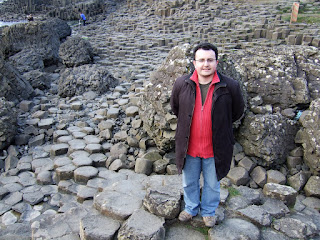Constructed mainly in sandstone, between 1865 and 1870, as a memorial to Queen Victoria's late Prince Consort, Prince Albert, it stands 113 feet tall. A statue of the Prince in robes of a Knight of the Garter stands on the western side of the tower. A two tonne bell in housed in the tower.
Designed by William J Barre, who also designed Belfast's Ulster Hall, it is described as a mix of French and Italian Gothic styles.
Built on wooden piles on marshy, reclaimed land around the River Farset, the top of the tower leans four feet off the vertical and is known colloquially as Belfast's "Leaning Tower of Pisa".Being situated close to the docks, the tower was once infamous for being frequented by prostitutes plying their trade with visiting sailors. However in recent years regeneration has turned the surrounding Queen's Square and Custom's House Square into attractive, modern public spaces with trees, fountains and sculptures.
In 1947, the film Odd Man Out was filmed partly in Belfast, with the Albert Clock as a central location, although neither the town or the clock is explicitly identified.









































